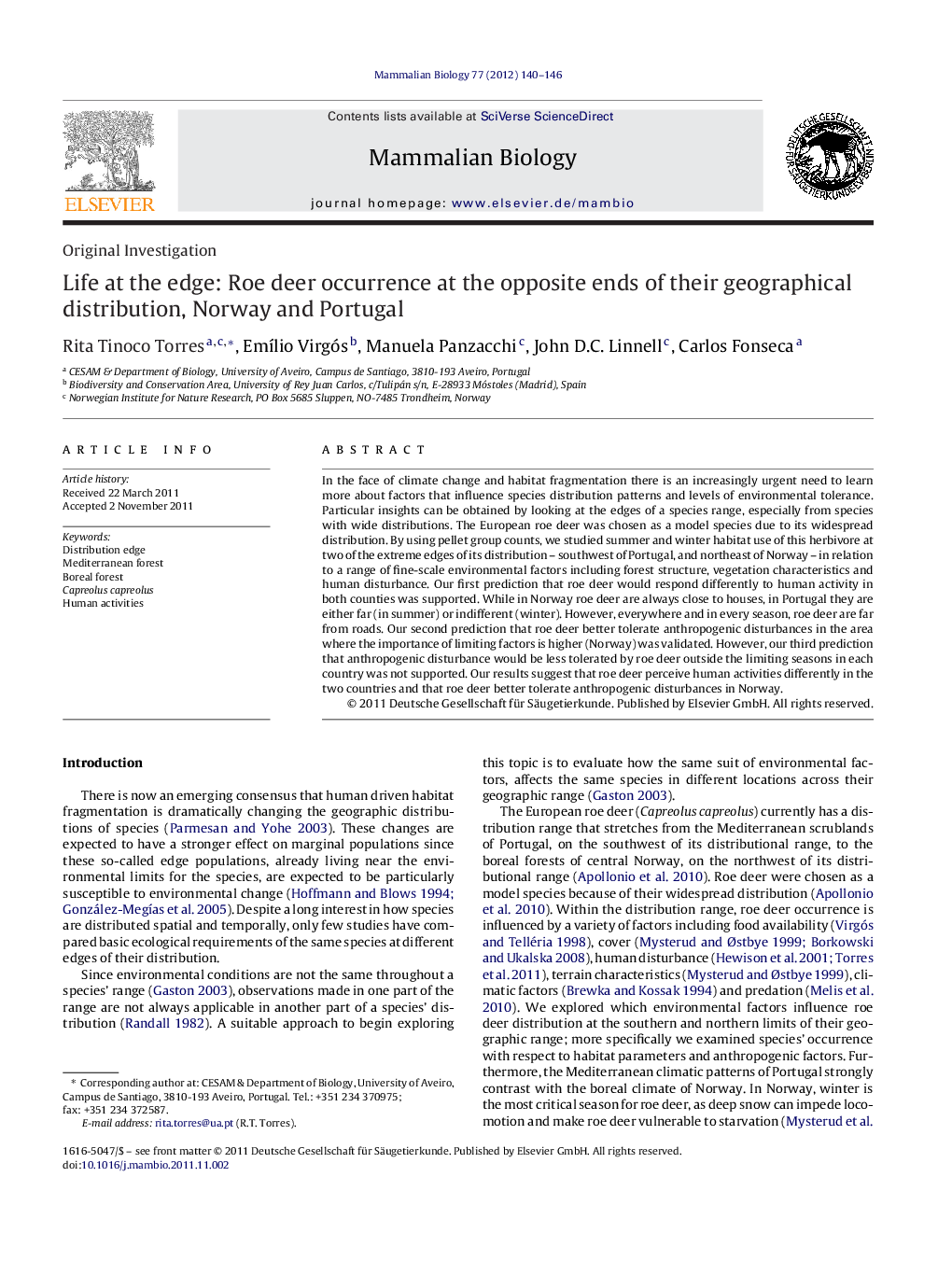| Article ID | Journal | Published Year | Pages | File Type |
|---|---|---|---|---|
| 2193790 | Mammalian Biology - Zeitschrift für Säugetierkunde | 2012 | 7 Pages |
In the face of climate change and habitat fragmentation there is an increasingly urgent need to learn more about factors that influence species distribution patterns and levels of environmental tolerance. Particular insights can be obtained by looking at the edges of a species range, especially from species with wide distributions. The European roe deer was chosen as a model species due to its widespread distribution. By using pellet group counts, we studied summer and winter habitat use of this herbivore at two of the extreme edges of its distribution – southwest of Portugal, and northeast of Norway – in relation to a range of fine-scale environmental factors including forest structure, vegetation characteristics and human disturbance. Our first prediction that roe deer would respond differently to human activity in both counties was supported. While in Norway roe deer are always close to houses, in Portugal they are either far (in summer) or indifferent (winter). However, everywhere and in every season, roe deer are far from roads. Our second prediction that roe deer better tolerate anthropogenic disturbances in the area where the importance of limiting factors is higher (Norway) was validated. However, our third prediction that anthropogenic disturbance would be less tolerated by roe deer outside the limiting seasons in each country was not supported. Our results suggest that roe deer perceive human activities differently in the two countries and that roe deer better tolerate anthropogenic disturbances in Norway.
